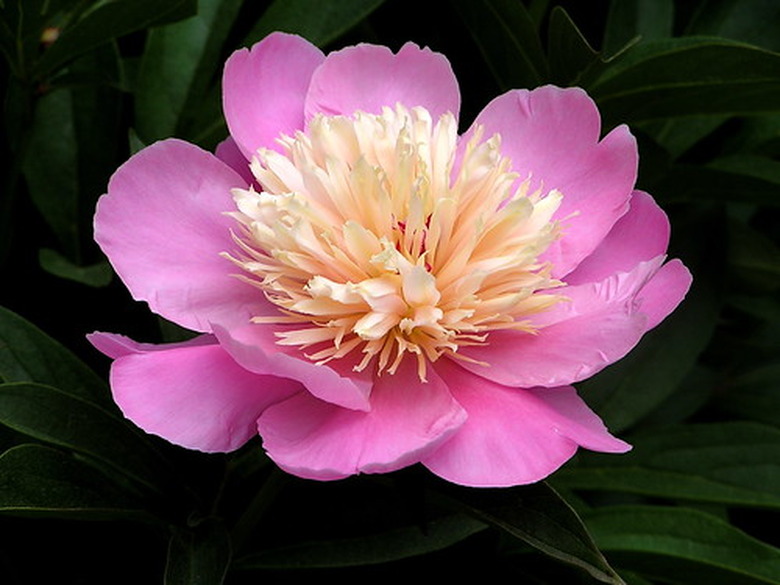Peony Identification
Peonies are grown for their beautiful flowers, which come in a wide range of forms and colors that are often very fragrant. They are perennials and are very adaptable, growing best in temperate and cooler climates. Peonies can make an excellent accent plant in a garden. Identification is broken down into four classifiers — plant type, bloom type, season and color.
History
The peony is one of the oldest cultivated flowers. Originating in Asia thousands of years ago, it has been celebrated throughout history in writing, song and art. Peonies were not only grown for their beauty, but also for medicinal purposes. During medieval times, peonies were brought to Europe as a medicinal herb. As time, went by the plant was also grown as an ornamental and many cultivars were developed in the 19th and early 20th centuries. Peonies made their way to the United States, where they were often grown in home gardens. However, there was great confusion about identifying peonies, particularly in the nursery business. In 1902, the American Peony Society was founded. In cooperation with Cornell University, the society established a nomenclature for peonies used to this day.
- Peonies are grown for their beautiful flowers, which come in a wide range of forms and colors that are often very fragrant.
Plant type
Peonies are divided into three main types. Herbaceous peonies die back to the ground during winter months. The plants re-emerge in spring, usually after the risk of frost has passed, presenting tall, thin stalks that bear usually bear a single flower.
Tree peonies, unlike herbaceous peonies, do not die back to the ground. Instead, they form woody tree-like branches that survive the winter, with new leaves appearing in the spring.
Finally, there are Itoh peonies. These branch like tree peonies, forming rounded and bushy plants. However, like herbaceous peonies, the Itoh peony dies back to the ground in winter.
- Peonies are divided into three main types.
- However, like herbaceous peonies, the Itoh peony dies back to the ground in winter.
Bloom Type
Bloom type is also used to identify a specific peony. Single peonies have a few broad petals in a single whorl around very large and visible stamens in the center of the flower.
Japanese-type blooms are similar to singles, except the filaments of the stamen in the middle of the bloom are extremely large and prominent.
Semi-double peonies have blooms with multiple petaloids within the center of the flower. These are mixed in with the stamens.
The bomb-type peony has petaloids in the center of the bloom that are broader and more numerous. The petaloids are still clearly separated from the outer guard petals.
- Bloom type is also used to identify a specific peony.
- Semi-double peonies have blooms with multiple petaloids within the center of the flower.
The full double bloom demonstrates a complete change in the center of the flower from stamens to another complete crown of petals. The center crown is so similar to the outer petals that it is often difficult to distinguish the difference.
Season
Peonies are also differentiated by the time of year they bloom. The time frames are divided as very early, occurring in late May in most areas, early, mid-season and late, which is usually late June. These times can vary, depending on location and climate conditions.
Color
Color is also used to classify peonies. The flower comes in a range of colors including red, pink, white, coral, lavender, yellow, and even green. Multi-colored peonies are classified as blends.
- The full double bloom demonstrates a complete change in the center of the flower from stamens to another complete crown of petals.
- The center crown is so similar to the outer petals that it is often difficult to distinguish the difference.
